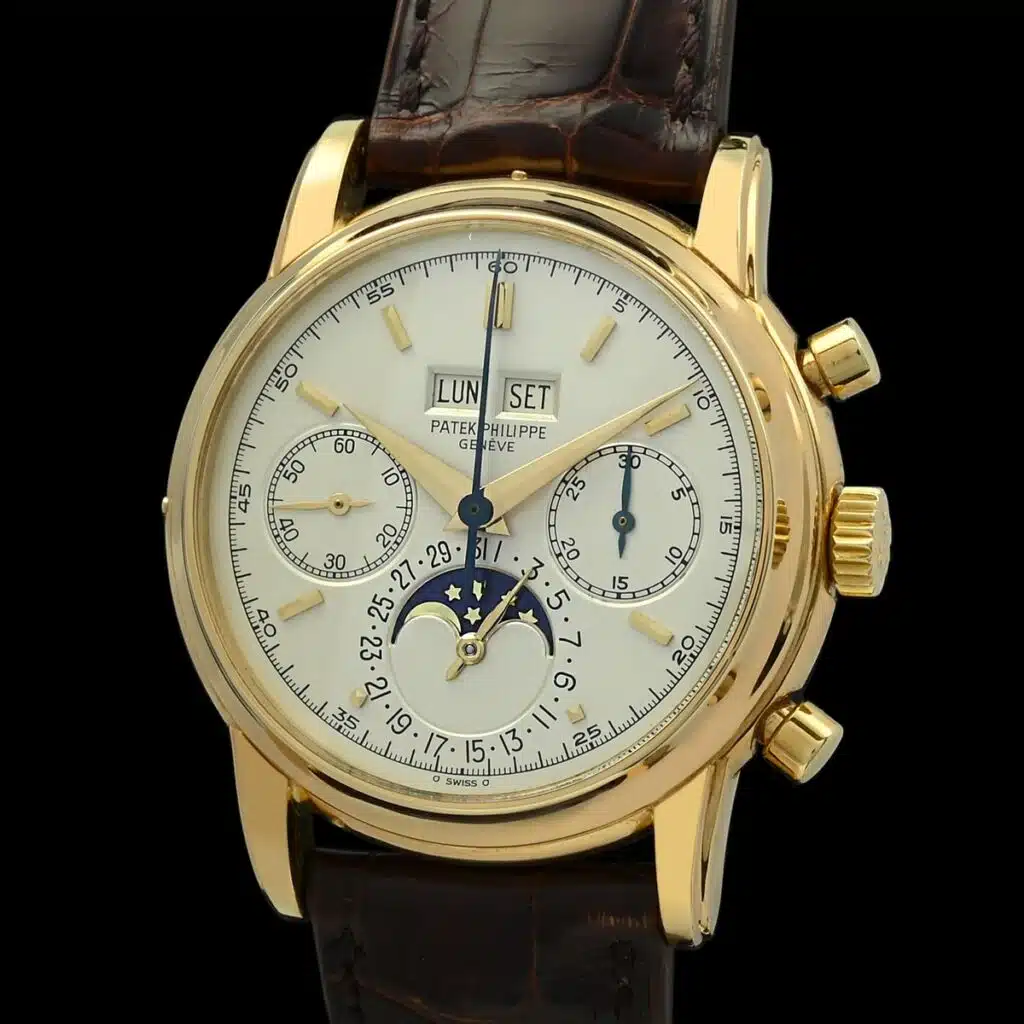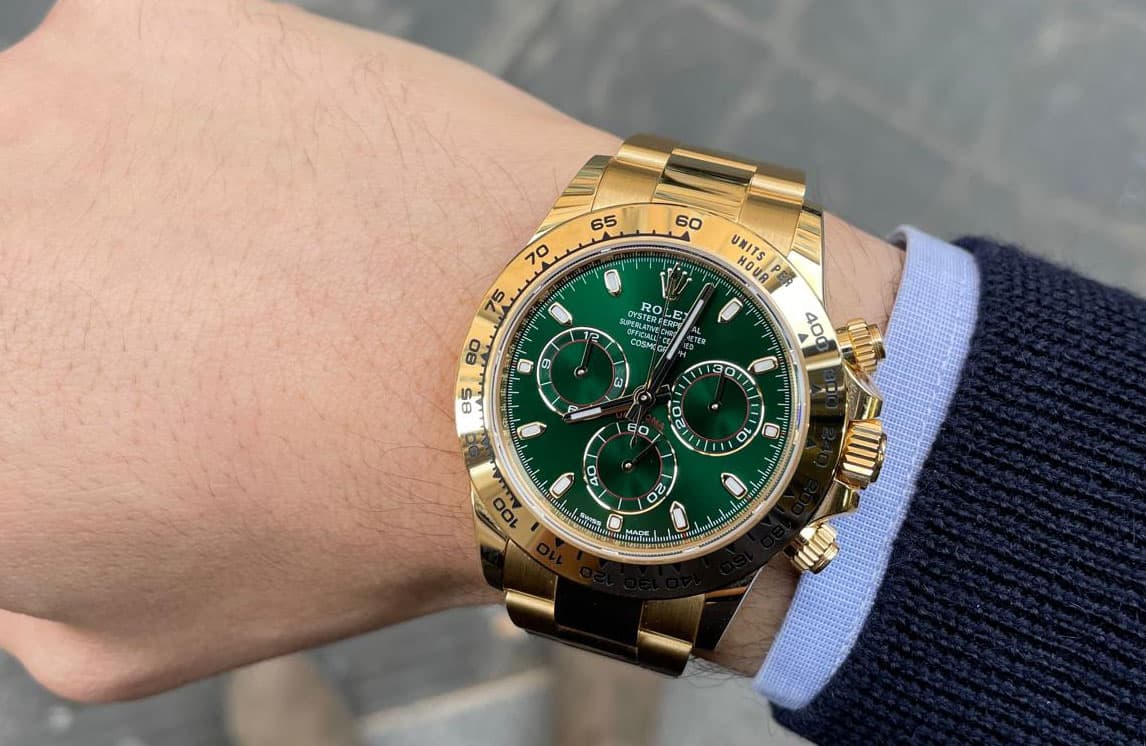
After interviewing managers, collectors and watchmaking historians, today we meet a "pure" enthusiast of the world of vintage hands, whose personal story has repeatedly risen to the heights of the news, both for his undoubted professional skills and for the prominent roles he has played over the years.
We are talking about Giampiero Massolo, Diplomat, Homeland Security official, business leader: his figure embodies versatility and commitment to the national interest through diverse roles but with one common thread. From leading the Department of Security Information to being at the helm of industrial giants such as Fincantieri and Mundys, his career is a testament to his service to the country.
In spite of the undoubtedly valuable character , there is an innate kindness and preparation in him, combined with a surprising and enduring love of collectible hands.

Who is Giampiero Massolo?
"I am essentially a civil servant who has been in his life, for many years, a diplomat; then for four years on loan to the national security sector, where I headed the "Department of Information for Security," which ensures the coordination of Italian intelligence. When this assignment ended, I left the public administration and led for six years, as president, a state-owned investee company: Fincantieri. I have now been in the private sector for two years and I am chairman of Mundys (ed. by most people known by the "old" name Atlantia, it is an Italian company active in 24 countries in highway infrastructure, airport and mobility-related services)."
What links such seemingly disparate activities?
"The common thread in all of this is serving the national interest, because the national interest is served by officials and is also served in the world of value creation, whether this creation is done in companies in which the state participates or in the private sector. Indeed, companies-both public and private-contribute to the definition of the national interest, and very often they are called upon to promote and defend it abroad. In Italy then, it is often up to them, with their production chains, to play an important role in the economic and social stabilization of the territories where they operate."
Working for Homeland Security, we imagine it must certainly have been interesting?
"Certainly, although I must admit that in my professional life there has never been a lack of interesting periods. Of course, intelligence is a beautiful field. I always jokingly say that those in intelligence do their work by diving, occasionally snorkeling, occasionally sticking their heads out, however, it is essentially diving... It is a very interesting way of doing things: contextualizing complex phenomena, trying to give the government the right information at the right time, and trying, to the extent possible, to influence situations on the ground. Like when, for example, you manage to get the release of a kidnapped Italian that is one of the greatest satisfactions you can experience."
What about diplomacy?
"A beautiful profession, which allows extraordinary experiences on the professional level, but also on the human level. It helps governments talk to each other, it tries to bring positions closer and smooth out corners, it supports our system-Country abroad. Today more than ever, in times of crisis and war, it is an important tool. It is a career worth pursuing."
How does the watchmaking enthusiast Giampiero come into being?
"It was actually born when I was a boy: my parents (my father worked at the Italian Embassy in Warsaw) gave me a Russian-made chronograph as a present, I still remember that it was a Uni-Compax with two counters and a blue tachymeter scale. I was very impressed with this watch. I must have been about 15 years old, and it evidently kindled a passion in me-which I did not cultivate, however."
But neither did it go out.
"I went from the usual communion watches, wedding watches ... until I began to have a salary that allowed me to look beyond the "bare minimum." I remember buying myself a used Rolex Date with a blue dial, which changed color depending on the light. The second watch, more or less in the family circle, was a Patek Philippe Calatrava ref. 96. From there on I went on."
Did you get into vintage right away?
"Yes, I found from the beginning the uniqueness of vintage watches fascinating: they are all different from each other, each reflecting in its own way the passage of time. Each one tells its own story. Many still incorporate the hand of the man who made them. I then like the meaning of the watch itself, with the passing of our days. I am excited by the concept of design, of aesthetics in the service of functionality, finally I have an interest in the mechanics - some very beautiful - of these timepieces. Slowly I began to build my collection, which as with all collectors initially was quantitative i.e. composed of various brands and types. At that time, we are talking about the 1990s and early 2000s, I ended up with about a hundred watches of various kinds and from various Maisons. Then my whole watchmaking "life" changed." How? (smiling) "I met Pucci Papaleo and nothing was the same as before. From that moment I began to have fewer and fewer watches, but with much more quality, going from various brands to only three: Rolex, Patek Philippe and Vacheron Constantin." No exceptions? "Only one, the Royal Oak ref. 5402ST serial B, designed by Gerald Genta: I find it inimitable and I really like its shape, its design.

Frequently hanging out with important people, when you are on a business appointment, do you ever look at the pulse of the participants
(smiling) "Always! I always look at their wrists and am often disappointed because there is no taste: apart from the triviality of digital watches, there is often no taste for matching, people wear timepieces that are out of place for the occasion. When, on the contrary, I spot something interesting, then I almost always find the right cue to spark a conversation about it."
Can you "spoiler" us something about a character that has impressed you?
"Now I honestly can't think of anything. Perhaps, beyond the characters, I can relate that one day I meet a colleague of mine who was already much older than me at that time, in a major European capital. I look at his wrist and see a watch that strikes me that I did not know. I ask him about it and he 'introduces' me to this incredible timepiece that is the Patek Philippe perpetual calendar ref. 3940. Since then I have had a couple of them, always exchanged, but also always bought back. It is no coincidence that it is also the watch I wear on my wrist today, in the platinum version, which is the one I prefer for its understatement."
Is there a "fetish" watch of yours, a model that always comes back?
"If the 3940 was love at first sight, the Royal Oak is also a model I have always resold and bought back. So 'good the first' for both. But it was the Patek 96 that ignited the love for vintage."
How do you choose your watches today?
"I choose them on the basis of one criterion: trying to have in the collection of the three brands mentioned before, significant watches, which in some way represent a sequence. So, for each brand, the solotempo sector, the calendar sector, the chronograph sector. Of these three brands and these types of watches, I try to the extent possible and budgetary, to have quality specimens."
All very precise?
"No. Not being a "vertical" type, I don't aim to have all the declinations of one model, but I like to have of some significant pieces, the most important variants. For example, of the Ovetto the steel version, the gold version and the steel/gold version. The Calatrava declined in the various dial colors... this is ideally "the organization" of my collection. In reality then, many goals often remain...an aspiration..."
Is there a watch you've always wanted but never got around to getting?
"But yes, of course. I have a dream: the Patek Philippe ref. 1518, which I consider to be the most beautiful watch ever, or the ref. 2499, which, however, I'm afraid would be a little big for my wrist."
About 2526 what do you think?
"A great watch ... I have a bracelet watch, yellow gold - which I wear with the strap ... with the bracelet seems a little excessive to me - with a cream enamel dial. A beautiful watch."

Is there more adrenaline when you buy or when you sell a watch?
"When I buy, no doubt. When I sell there is always a drama to leave behind."
Between a dinner with collectors or otherwise someone in the watchmaking world and an official diplomatic dinner?
"Do you know how many times I have run away early from an official dinner to go to a dinner with friends. (smiling) Duty first, but then pleasure."
Is there a piece you regretted selling?
"Of course ... some pieces that I was sorry to have sold then I took back. Others unfortunately I didn't. I had, for example, a beautiful Rolex Ovettone, the reference I think was 5036, with triplicate Arabic numerals and seconds at 6 o'clock. I gave it away in an exchange along with other watches, to get a Patek Philippe ref. 1526. Too bad...although I really like that perpetual."
What advice would you give to a person starting to enter the world of collecting?
"Study a lot and then choose well the people you go with. Be aware and have confidence."
Is watchmaking an investment or a passion?
"I specialize in liking watches that then don't increase in value...I hope this will end eventually! It is basically passion. If it then happens well... I am sure, however, that the true watch enthusiast, the true collector, does not buy to make money, but buys because he likes the object. If the combination then succeeds, it is collateral damage."
When you go abroad, do you happen to find anything at the various flea markets or antique stores?
"My travels are always hectic, but every now and then it happens to me. However, I just go to some addresses I already know, because I don't have much time to go 'researching.' It rarely happens during a trip to finalize a purchase. It's really difficult."
Have you ever happened to ask someone to sell you a watch? Maybe Bill Gates or Barack Obama?
(smiling) "No...it hasn't happened to me. But I have been tempted at times!"
Do they even comment on your watches? It's a way to fraternize, to get down to a less official level.
"It happens to me from time to time. Sometimes I do it too, I use it as an ice-breaking technique..."

What do Italian politicians wear?
"Silvio Berlusconi's passion for Haute Horlogerie was well known: I remember when I was head of the secretariat in his first government, I went to Hausmann & Co. in Rome to have one of his Patek Philippe minute repeaters serviced. A watch I know well, white dial Roman hour markers. Carlo Azeglio Ciampi owned a Vacheron Constantin but almost always wore Swatches. Giorgio Napolitano wore a very nice gold watch, but not a particular brand."
You have known and worked with several Presidents of the Republic.
"In my two public positions in senior roles, Secretary General of the Ministry of Foreign Affairs and Director General of the Department of Security Information, I interfaced with the government and various institutional figures at the highest level. For me, it has been a privilege."
More than once your name has come up in the "toto-president of the council." What do you do in such cases?
(smiling) "Nothing, I'm hiding. It's not my job: I do and have been a civil servant."
